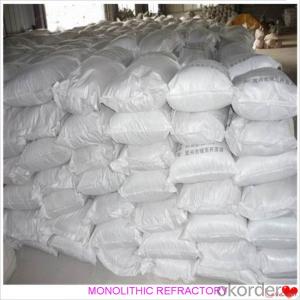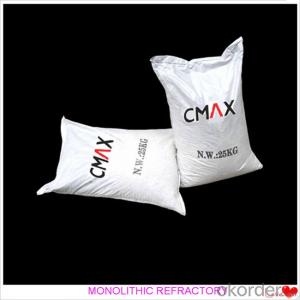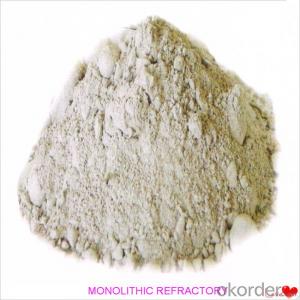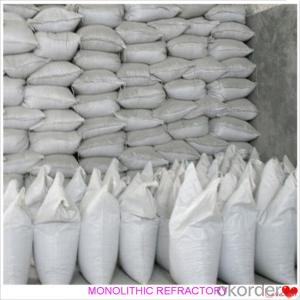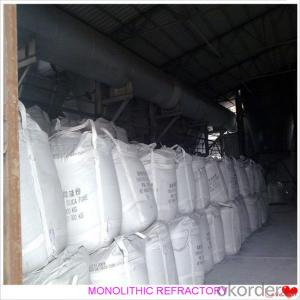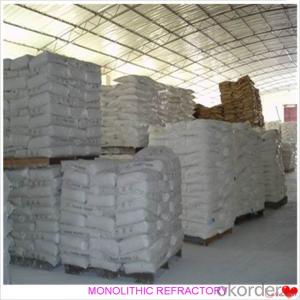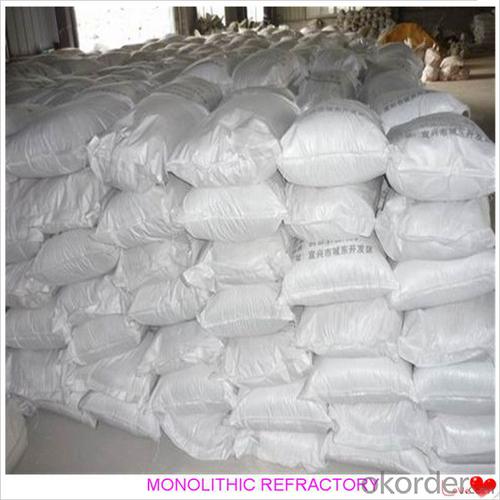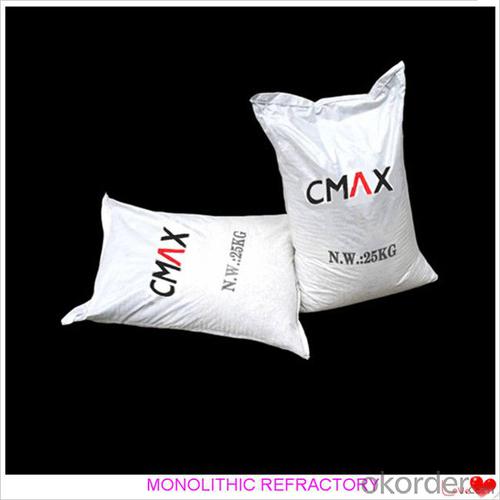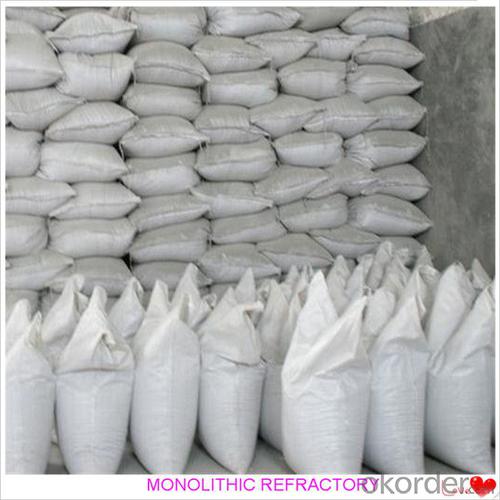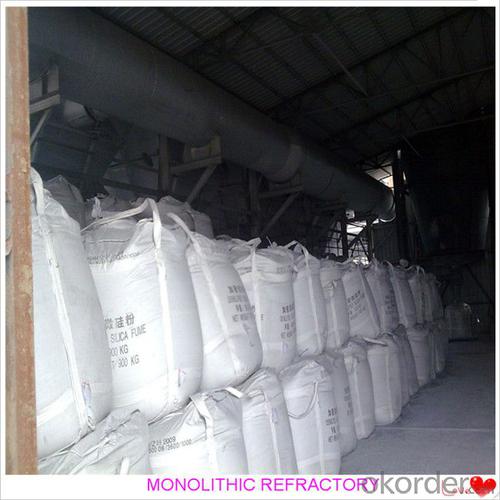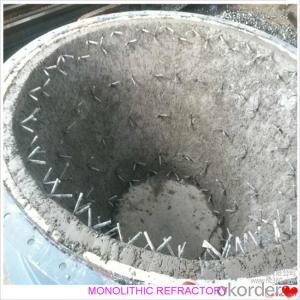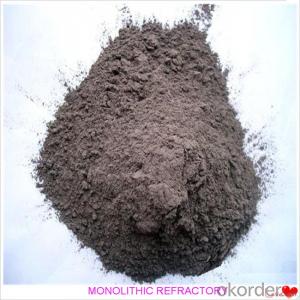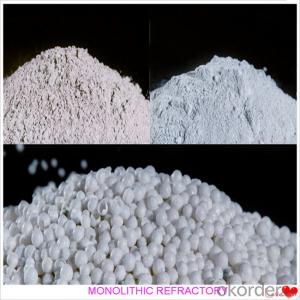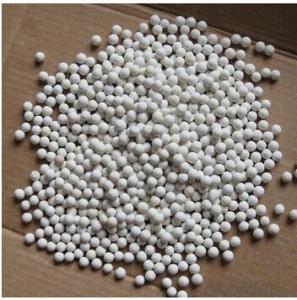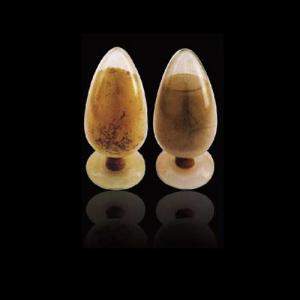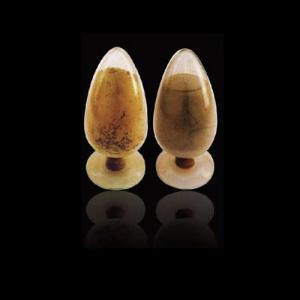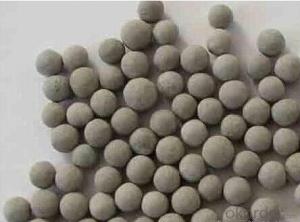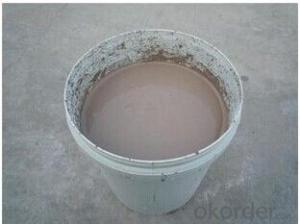Monolithic Refractories for Iron and Steel Industry - Insulating Castable for Fireside and Industrial Furnace
- Loading Port:
- China main port
- Payment Terms:
- TT OR LC
- Min Order Qty:
- 1000 kg
- Supply Capability:
- 3000000 kg/month
OKorder Service Pledge
OKorder Financial Service
You Might Also Like
Insulating Castable For Fireplace and Industrial Furnace in Iron and Steel
Product Description:
Insulating castable is manufactured according to international standards. The product is famous for its excellent abrasion resistance and low thermal conductivity. Further, these can be provided in different specifications as required by the clients. The Insulating castables are used high purity raw materials and additives as the main material, and made of under superfine powder adding technology.
Product Advantages:
The material has excellent structural stability and air tightness, and has high physical and chemical properties, also has a fine working ability.They should be used with the same material products.
Product Applications:
For feature of Insulating castable, they have excellent abrasion resistance, thermal shock resistance, high-temperature resistance, anti-corrode and have high intensity.
Designed for refractory lining of blast furnace iron and slag runners, skimmers and soon
They can be used in troughs of small and mid size BFs and in all positions of the troughs where fast tapping is required.
Product Specifications:
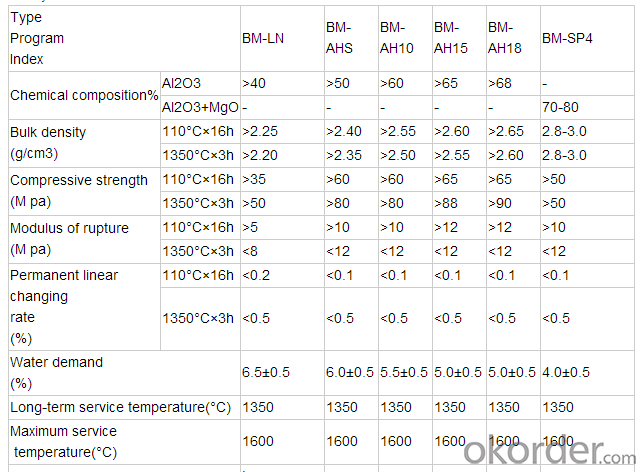
FAQ:
1. How you can control your quality?
For each production processing, we have complete QC system for the chemical composition
and Physical properties. After production, all the goods will be tested, and the quality certificate
will be shipped along with goods.
2. What's your delivery time?
It usually needs about 20days- 45 days after receiving the deposit.
3. Do you provide free samples?
Yes, we can provide a free sample for testing, If we have sample in stock,
The quantity based on the material type, The buyer should bear all the shipping costs.
4. What's your payment terms?
We can accept 30% deposit, 70% balance before shipment for ordrs over $ 2000.
5. Can we visit your Company?
Yes, certainly. You are very welcome to China and we will be honored to have a customer and friend.
Product Picture:
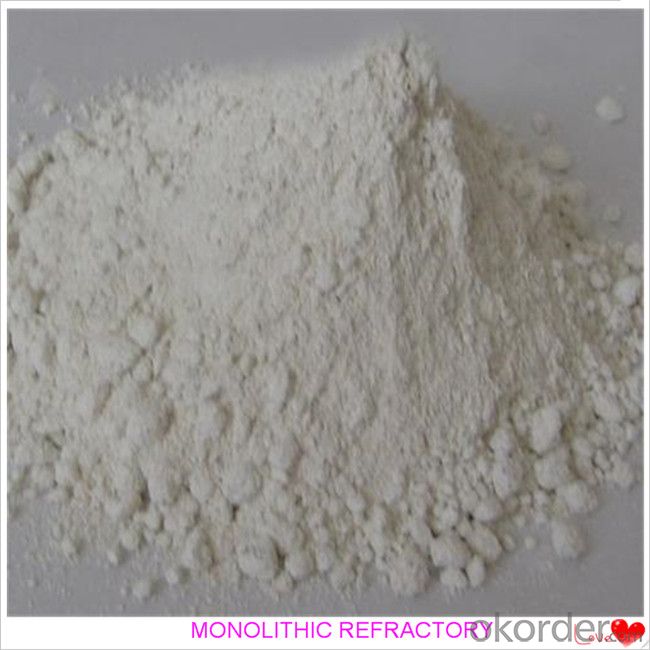
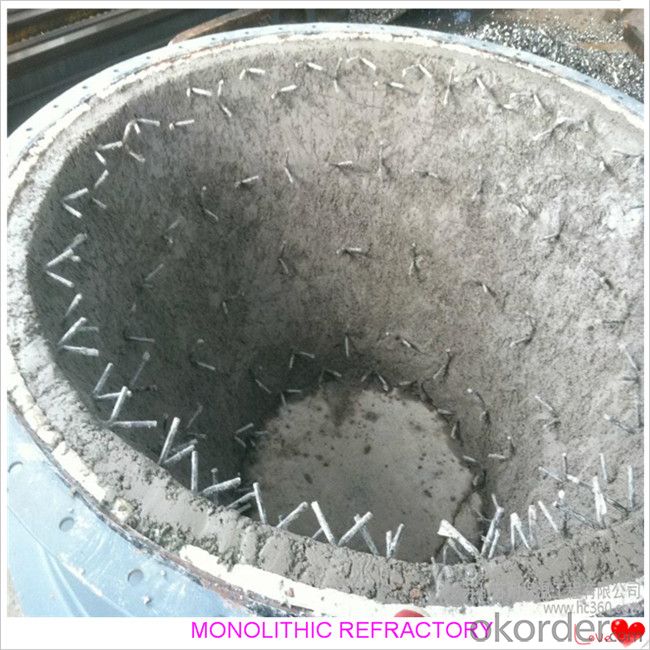
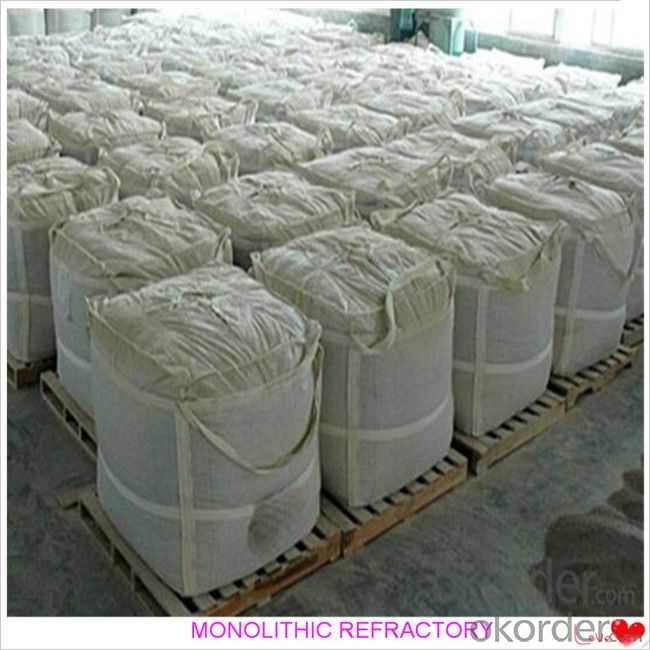
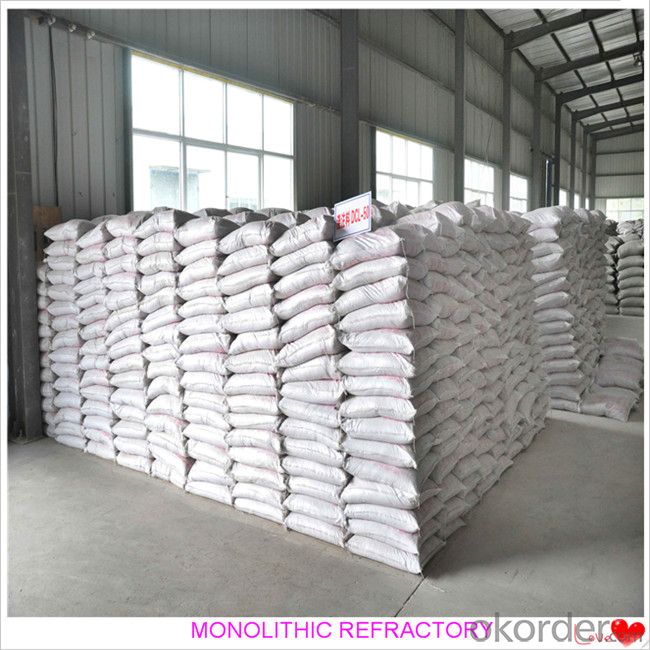
- Q: How do monolithic refractories contribute to the overall efficiency of iron and steel production?
- Monolithic refractories play a crucial role in enhancing the overall efficiency of iron and steel production. These refractories, which are made from a single material, provide exceptional thermal insulation, resistance to high temperatures, and excellent mechanical strength. By lining the furnaces, ladles, and other equipment used in the production process, monolithic refractories help in maintaining and regulating the required high temperatures for melting, refining, and shaping iron and steel. This insulation reduces heat loss, minimizes energy consumption, and ensures a more efficient and cost-effective production process. Additionally, the mechanical strength of monolithic refractories allows for better protection against wear and tear, resulting in increased equipment lifespan and reduced downtime for repairs and maintenance. Overall, the use of monolithic refractories significantly contributes to the efficiency, productivity, and sustainability of the iron and steel production industry.
- Q: What are the challenges faced in the application of monolithic refractories?
- Some challenges faced in the application of monolithic refractories include proper material selection, achieving proper installation techniques, ensuring consistent and uniform application, controlling drying and curing processes, and dealing with potential shrinkage and cracking issues. Additionally, monolithic refractories often require skilled labor for installation and maintenance, and they may be susceptible to erosion, thermal shock, and chemical attack in certain environments.
- Q: How do monolithic refractories contribute to the overall efficiency of ladle slagging operations?
- Monolithic refractories play a crucial role in improving the overall efficiency of ladle slagging operations. Ladle slagging is a process that involves the removal of impurities from molten metal in a ladle before it is poured into molds or further processed. One of the key contributions of monolithic refractories is their ability to withstand high temperatures, which is essential in ladle slagging operations. The refractory lining of the ladle needs to be able to endure the extreme heat generated by the molten metal and slag, as well as the chemical reactions occurring during the process. Monolithic refractories, with their high thermal stability, prevent the lining from cracking or deteriorating, thus ensuring the integrity of the ladle and maintaining its efficiency. Additionally, monolithic refractories offer excellent resistance to chemical erosion and corrosion. During the ladle slagging process, the molten metal and slag can contain various impurities and aggressive chemicals, such as sulfur, phosphorus, and other oxides. These substances can attack and degrade the lining of the ladle, compromising its efficiency. However, monolithic refractories are designed to resist these chemical attacks, thereby extending the lifespan of the ladle and reducing the need for frequent repairs or replacements. Moreover, monolithic refractories provide good thermal insulation properties. Ladle slagging operations require precise temperature control to ensure the desired chemical reactions and efficient removal of impurities. The thermal insulation offered by monolithic refractories helps to maintain a consistent temperature within the ladle, preventing heat loss and allowing for optimized slagging conditions. This insulation also minimizes energy consumption and improves the overall energy efficiency of the ladle slagging process. In conclusion, monolithic refractories contribute significantly to the overall efficiency of ladle slagging operations. Their ability to withstand high temperatures, resist chemical erosion, and provide thermal insulation ensures the integrity and longevity of the ladle. By reducing the need for frequent repairs and allowing for precise temperature control, monolithic refractories optimize the slagging process, leading to improved productivity and cost-effectiveness.
- Q: What are the advancements in monolithic refractory technology for the iron and steel industry?
- In recent years, significant progress has been made in the field of monolithic refractory technology for the iron and steel industry. Monolithic refractories, which are heat-resistant materials used to line the walls and floors of high-temperature industrial processes, have seen notable advancements. One of the key breakthroughs in monolithic refractory technology is the development of new and improved materials. Traditional refractory materials like firebricks have been replaced by more advanced options such as castables and gunning mixes. These upgraded materials offer superior performance in terms of thermal conductivity, thermal shock resistance, and erosion resistance. They can endure higher temperatures and can be applied more efficiently, resulting in enhanced process efficiency and reduced maintenance downtime. Another significant advancement is the utilization of advanced additives in monolithic refractories. These additives have the ability to enhance the properties of the refractory material, such as increasing its resistance to corrosion and erosion. They also improve the bond between the refractory and the substrate, ensuring a longer lifespan for the lining. Furthermore, the progress in monolithic refractory technology has led to the development of innovative installation techniques. Shotcreting, for example, has gained popularity due to its efficiency and ability to provide a uniform lining by spraying the refractory material onto the surface. Similarly, the use of gunning machines, which pump the refractory material at high velocity, has improved the speed and accuracy of installation. Moreover, there have been advancements in the design of monolithic refractories tailored specifically for various applications in the iron and steel industry. Refractories for blast furnaces, ladles, tundishes, and other critical equipment have been optimized to withstand the unique challenges and harsh conditions of these processes. The development of specialized monolithic refractories has resulted in increased productivity, reduced energy consumption, and improved product quality in the iron and steel industry. In conclusion, advancements in monolithic refractory technology for the iron and steel industry have brought about improved materials, advanced additives, innovative installation techniques, and specialized designs. These advancements have significantly enhanced the performance, durability, and efficiency of refractory linings in high-temperature industrial processes. Consequently, the iron and steel industry can benefit from increased productivity, reduced downtime, and improved product quality.
- Q: How do monolithic refractories contribute to the overall productivity of iron and steel production?
- Monolithic refractories play a crucial role in enhancing the overall productivity of iron and steel production. These refractories are widely used in various applications such as furnaces, ladles, and tundishes, offering excellent thermal stability and resistance to chemical attacks. By providing a durable lining, monolithic refractories ensure longer campaigns and reduced downtime for repairs and maintenance. This leads to increased production efficiency, reduced energy consumption, and improved product quality, ultimately contributing to the overall productivity of iron and steel production.
- Q: How do monolithic refractories resist thermal shock in the iron and steel industry?
- Monolithic refractories in the iron and steel industry resist thermal shock primarily due to their ability to absorb and distribute thermal stress. These refractories are composed of a single, continuous structure, eliminating the weaknesses inherent in jointed or layered materials. Their dense and homogeneous structure allows for efficient heat transfer and expansion, minimizing the risk of cracking or spalling caused by sudden temperature fluctuations. Additionally, monolithic refractories possess high thermal conductivity, which aids in dissipating heat and preventing localized hotspots. Overall, their resilience to thermal shock makes them ideal for withstanding the extreme conditions of the iron and steel manufacturing processes.
- Q: Can monolithic refractories be used for the lining of continuous casting tundishes and molds?
- Indeed, tundishes and molds used in continuous casting can utilize monolithic refractories for their lining. These refractories consist of a single, uniform structure, in contrast to traditional refractories that are composed of multiple bricks or tiles. The utilization of monolithic refractories offers various advantages in the lining of tundishes and molds during continuous casting procedures. Firstly, their monolithic nature allows for convenient installation and repair, as they can be cast or gunned into place, eliminating the need for intricate brickwork. Consequently, this reduces downtime and enhances productivity. Furthermore, monolithic refractories demonstrate exceptional resistance to thermal shock, which is critical for tundishes and molds that undergo rapid and extreme temperature fluctuations throughout the casting process. Their high thermal conductivity additionally ensures efficient heat transfer, facilitating uniform cooling and solidification of the cast metal. Additionally, monolithic refractories exhibit commendable resistance to chemical attack, ensuring prolonged performance even in the presence of molten metal and slag. Their low porosity further prevents metal penetration and the formation of cracks or spalling. In summary, monolithic refractories are a practical and efficient choice for lining continuous casting tundishes and molds, offering superior performance, ease of installation, and durability in the demanding conditions of the casting process.
- Q: How do monolithic refractories improve the quality and consistency of iron and steel products?
- Monolithic refractories play a crucial role in improving the quality and consistency of iron and steel products. These refractories are unshaped and can be easily molded and installed, providing several advantages over traditional brick refractories. Firstly, monolithic refractories offer better thermal insulation properties, ensuring effective heat management during the production process. By maintaining consistent and controlled temperatures, these refractories prevent thermal shocks and minimize thermal gradients, leading to reduced cracking and distortion in the final products. This results in improved dimensional stability and overall better quality. Furthermore, monolithic refractories have excellent resistance to thermal spalling and erosion. They can withstand high temperatures, chemical attacks, and mechanical stress, protecting the lining of the furnaces and vessels used in iron and steel production. This resistance enhances the durability and reliability of refractory linings, preventing premature failure and extending the lifespan of the equipment. Another advantage of monolithic refractories is their ability to provide a seamless lining. Unlike brick refractories, which have joints and gaps that can lead to heat loss and uneven distribution, monolithic refractories create a continuous lining with no weak points. This ensures uniform heat distribution and minimizes the risk of hotspots or cold spots, resulting in consistent and reliable iron and steel products. Monolithic refractories also offer flexibility in design and installation. They can be customized to fit various shapes and sizes, allowing for better furnace design optimization. This flexibility enables efficient use of space, improved heat transfer, and reduced energy consumption, all of which contribute to the overall quality and consistency of the final iron and steel products. In summary, monolithic refractories improve the quality and consistency of iron and steel products by providing superior thermal insulation, resistance to thermal spalling and erosion, seamless linings, and flexibility in design and installation. These refractories enhance the efficiency and reliability of the production process, resulting in higher-quality final products that meet the industry's stringent standards.
- Q: What are the recommended drying procedures for monolithic refractories?
- Drying methods for monolithic refractories differ based on the specific type and composition of the material. Nevertheless, there exist general guidelines that can be adhered to. Initially, it is crucial to eliminate any excess moisture from the refractory material prior to drying. This can be achieved by storing the refractory in a dry environment or utilizing a dehumidifier if necessary. Once the refractory material has been adequately dried, the drying process can commence. It is advisable to initiate the process with a low drying temperature in order to prevent cracking or spalling. Gradually raising the temperature over time will allow for the gradual release of moisture. This can be accomplished by employing a controlled drying oven or furnace. The duration of the drying process will differ depending on the thickness and composition of the refractory. It is imperative to adhere to the manufacturer's guidelines for the specific refractory material being utilized, as they will provide the recommended drying duration and temperature range. Throughout the drying process, it is important to closely monitor the refractory for any indications of cracking or spalling. Should any cracks or damage occur, the drying process should be immediately halted to prevent further harm. It may be necessary to repair or replace the damaged areas before proceeding with the drying process. Once the refractory material has been fully dried, it is crucial to gradually cool it down to avoid thermal shock. This can be achieved by gradually reducing the temperature over time or allowing the refractory to naturally cool in a controlled environment. In conclusion, the recommended drying procedures for monolithic refractories involve gradually increasing the temperature over time, closely monitoring for any signs of damage, and slowly cooling down the refractory to prevent thermal shock. It is essential to adhere to the manufacturer's guidelines and recommendations for the specific refractory material being utilized to ensure proper drying and optimal performance.
- Q: How do monolithic refractories mitigate heat loss in iron and steel operations?
- Monolithic refractories possess unique properties and composition that make them highly effective in reducing heat loss in iron and steel operations. Unlike other refractories, monolithic ones are made from a single, continuous material, making them resistant to cracks and gaps that could potentially allow heat to escape. One major advantage of monolithic refractories lies in their exceptional thermal conductivity and insulation properties. With their low thermal conductivity, they are able to effectively limit the transfer of heat from hot areas to cooler surroundings. This insulation characteristic helps maintain high temperatures within iron and steel operations, resulting in reduced heat loss to the environment. Another contributing factor to heat loss mitigation is the ability of monolithic refractories to form a tight seal with the metal structures they are applied to. They adhere well to surfaces and fill in any gaps or irregularities, creating a solid barrier against heat loss. By minimizing the possibility of heat escaping, these refractories ensure that the energy generated within the operations is utilized effectively. Additionally, monolithic refractories exhibit high resistance to thermal shock. In the iron and steel industry, rapid temperature fluctuations are common, which can lead to material deterioration and cracks. However, monolithic refractories possess the ability to withstand these temperature changes without compromising their structural integrity. This guarantees the longevity and effectiveness of the refractories in mitigating heat loss. In summary, monolithic refractories play a vital role in reducing heat loss in iron and steel operations through their excellent insulation, ability to form a tight seal, and resistance to thermal shock. These properties enable them to maintain high temperatures, optimize energy utilization, and enhance overall process efficiency.
Send your message to us
Monolithic Refractories for Iron and Steel Industry - Insulating Castable for Fireside and Industrial Furnace
- Loading Port:
- China main port
- Payment Terms:
- TT OR LC
- Min Order Qty:
- 1000 kg
- Supply Capability:
- 3000000 kg/month
OKorder Service Pledge
OKorder Financial Service
Similar products
Hot products
Hot Searches
Related keywords
